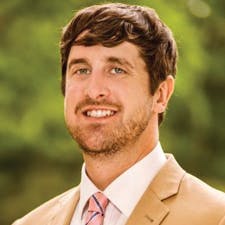What iscorporate dentistry? And what's at stake for the private practitioner?
While most individual or small group practices are corporations in a legal sense, the term corporate dentistry has come to be colloquially understood within the profession as referring to multilocation, multidoctor dental practices.
Corporate practices can be organized in numerous ways, and the DSO-affiliated practice is a specific type of practice among the most common that a patient or practitioner may recognize, particularly when that corporation uses a common brand name across all of its office locations (e.g., Aspen Dental).
The DSO is a very specific business structure designed to comply with limitations on practice ownership found in most states. In those states where a licensed dentist is the only satisfactory owner of a dental practice, the DSO is not the technical owner of the clinical practice. As the DSO is not the owner, it operates as a contracted service provider for a professional corporation (PC) that employs the clinical staff of multiple practices (hence the term "dental service organization").
The typical PC (the licensed "owner"-dentist) that contracts with the DSO is incorporated under the name(s) of the first dentist or dentists in the state who "sell" their practices to the DSO. Those sales result in DSO ownership of all equipment, leases, and nonclinical employment agreements for those practice locations. Additionally, the DSO assumes operational control of the practices. The only aspects of the business that must remain under the control of the PC are clinical decisions, which are made by the licensed principals and their clinical "employees" across all DSO-supported locations.
A look at DSOs' competitive strategies: Here's how to tell them apart
Most DSOs are structured similarly-holding a long-term, or even perpetual, service agreement with the PC-but they tend to vary in how they compete. DSO competitive strategies range from a focus on specific geographies to a focus on common marketing, and some even focus on specific specialties.
Many of today's larger DSOs launched in and expanded from specific regions of the country (e.g., Pacific Dental Services, Heartland Dental, and Midwest Dental). Geographic strategies allow for centralization of operations and efficiencies in distribution (supplies and management), much like the hub-and-spoke model that allowed Walmart to become ruthlessly efficient and exceed its competitors' operating margins.
Other DSOs (e.g. Aspen Dental, Great Expressions, and Birner Dental Management Services' Perfect Teeth) are marketing-focused and use a common practice name across all locations to build brand awareness. This strategy allows for individual practice locations to benefit from a top-down marketing approach and allows "de novo" locations to benefit from an established brand reputation.
Finally, DSOs that focus on specialties or niche procedures (e.g., Dentistry for Children, Affordable Dentures, and Onsite Dental) benefit from their perceived expertise in a segment of the market and from the limited scope of the procedures they perform, which can make forecasting easier and increase bargaining power for obtaining supplies and materials necessary for those procedures or specialties.
Each of these DSO strategies conceptualizes the dental marketplace and how to best achieve success differently. Despite these conceptual differences, at a fundamental level all DSOs try to achieve efficiencies through economies of scale, a relentless focus on controlling costs within practice operations, and ensuring maximal employee productivity.
Industry consolidation is happening—here's how
Traditionally structured dental practices-and their owners, partners, and employees-will continue to see increasing competition with DSO-"owned" practices for the foreseeable future. Macroeconomic changes in the dental insurance marketplace are going to result in declining insurance reimbursements. Likewise, regulatory changes may increase the scope of procedures that midlevel providers (MLPs) may perform and the issuance of government contracts. These macro changes will favor the larger organization that can both afford to meet the regulatory burden of insurers and governmental purchasers and profitably leverage the expanded practical scope of the MLP. Being the largest organizations in the industry, DSOs may be in a prime position to exploit these changes.
Aside from these changes, well-documented changes within the industry will also drive consolidation, including the growth of a new "type" of dental student and the impending retirement of baby-boomer owners. Among dental students, there is a noticeable shift from a "clinician" mentality to a "provider" mentality. This shift, in a way, represents a complete change in the normative expectations for a profession. It looks very similar to the shift in the role of the pharmacist, who was once a clinician and likely a business owner but who is now most likely a provider under the employ of large retail and mail-order pharmacies (e.g., CVS/Caremark). The graduating "provider" is more likely to see employment via "corporate" dentistry as an attractive option than his or her predecessors. Established individual practices may even find it difficult to compete against DSOs for talented associates because of both the normative shift and the DSOs' abilities to offer higher guaranteed compensation.
Another factor, the retirement of baby-boomer dentists, will contribute to consolidation in dentistry because successful practice owners may face a paucity of potential acquirers-due to both increased student-debt loads and the "provider" mentality decreasing entrepreneurial activity among younger dentists. In exploring potential practice exit strategies (i.e., for retirement), established dentists might find that DSOs offer the only practical exit strategy for larger independent practices because their access to capital (and debt) is more advantaged than that of most individuals.
The outlook for private practitioners: Is competition possible?
Couple increased competition against consolidated practices with, on average, flat or declining earnings (net income) in private practices over the past 15 years, and the outlook for private practice dentistry may seem bleak. However, for private practice owners, there are lessons to be learned from DSOs and opportunities to excel where DSOs are weak.
DSOs excel at practice operations, which can maximize the utility of fixed practice costs (e.g., rent, labor, equipment, and marketing). Most also employ experts to negotiate contracts with vendors (e.g., suppliers, landlords, and media) because their scale affords them more bargaining power and, typically, lower costs than are achievable for private practices. By emulating the DSOs' relentless focus on costs, private practice owners can achieve meaningful savings and a healthier bottom line.
DSOs also excel at business intelligence. DSOs use simple metrics, such as patient acquisition cost and patient lifetime value, to increase the efficiency and efficacy of their marketing strategies. Through easy data collection (by using phone numbers specific to each campaign or type of media, or better referral tracking) and analysis (simple math), private practices can build knowledge about their competitive environment and develop more successful marketing strategies.
Despite DSOs' advantages in scale, negotiations, and business intelligence, practices built on the traditional model can still be successful competing with DSOs. Independent practices can differentiate themselves from "corporate" practices by focusing on quality of care and customer satisfaction. Relationship building and word-of-mouth marketing will be more critical than ever for the private practice. Likewise, the employment and retention of quality associates, hygienists, assistants, and support staff can help differentiate the private practice. Spend time assessing the quality of the workplace environment you provide those employees, and set aside your ego in inviting constructive criticism and ideas from your staff. A bright man once said, "Enlightened trial and error succeeds over the planning of the lone genius." Ideas from your employees related to marketing and operations may help you more quickly figure out what works for your practice, patients, and location.
If you are an owner-dentist, you have the greatest advantage of all: control. For over 100 years, some of the greatest minds in business have tried to resolve the problem of the owner versus the manager. Owners (think shareholders) have different goals than managers (think CEOs) in situations where management controls but does not wholly own a business. How many CEOs have crippled companies, wiping out significant shareholder value, yet have walked away with millions in personal remuneration? DSOs are not immune from this problem, which is one that Nobel Prize-winning economists have failed to solve. The greatest leader of an organization is one whose ultimate success and fulfillment comes from that organization. An owner who is educated and who has the right team will always outperform a "hired gun."
DSOs will be a factor in the dental industry, whether private practitioners are prepared to compete with them or not. In order to remain viable, private practitioners must be open to learning from DSOs and emulating what makes DSOs so successful, while leveraging their idiosyncratic advantages as owner-dentists.
Kevin Cain, PhD, MBA, is an assistant professor of management in the James M. Hull College of Business at Augusta University. He teaches strategic management and entrepreneurship courses at the undergraduate and graduate levels and guest lectures in the Dental College of Georgia. His research focuses on the impact of social approval and impression management on organizational performance. He also focuses on dentistry, with interest in industry consolidation and the determinants of entrepreneurial intention in dental students. Outside of academia, he consults with and provides continuing education for dental practices and organizations. He currently serves as a strategic adviser to the Georgia Dental Association and is active in the corporate governance of a couple of companies focused on the dental market, including Save Dentists Inc. He can be reached at [email protected]







